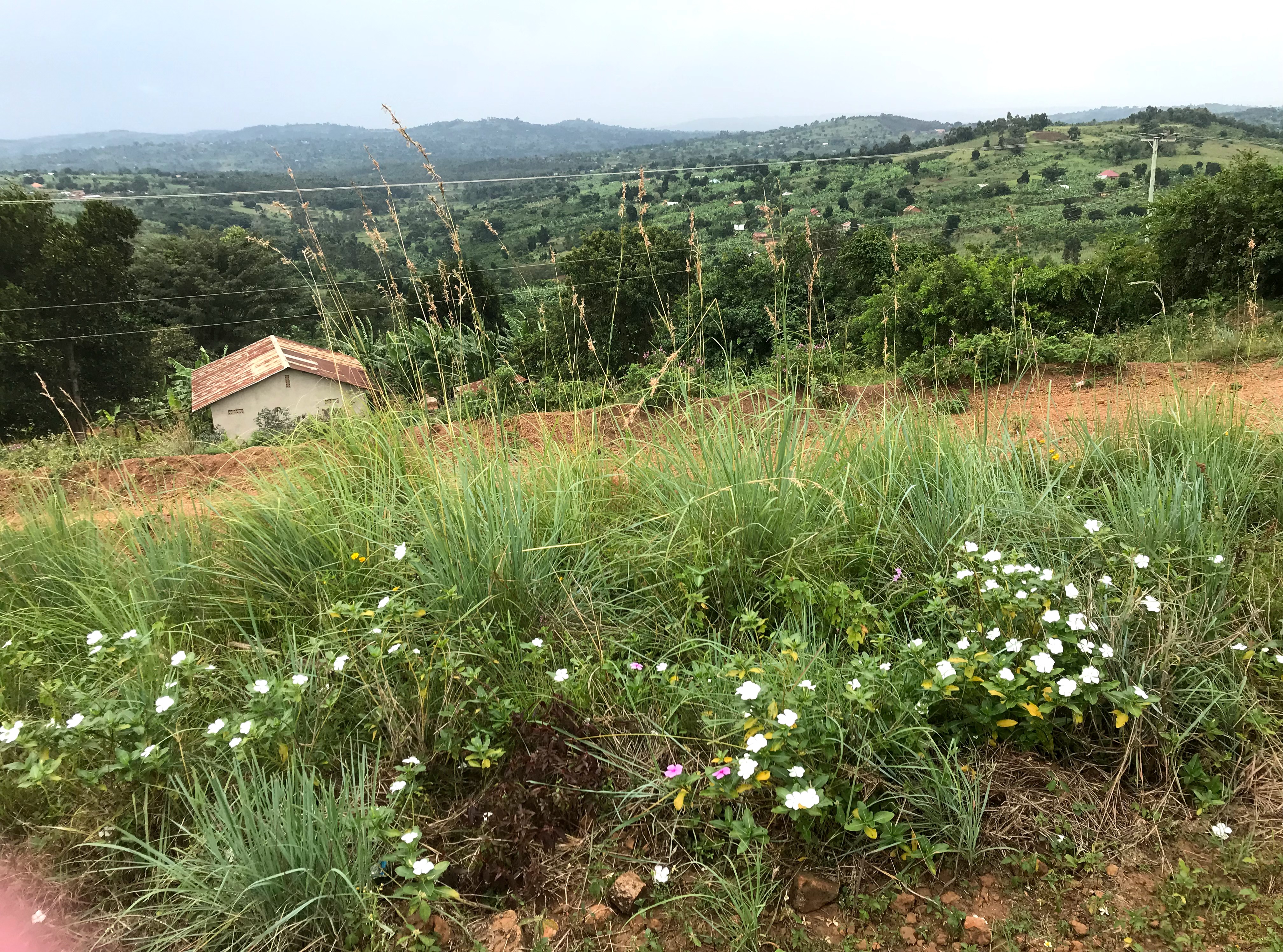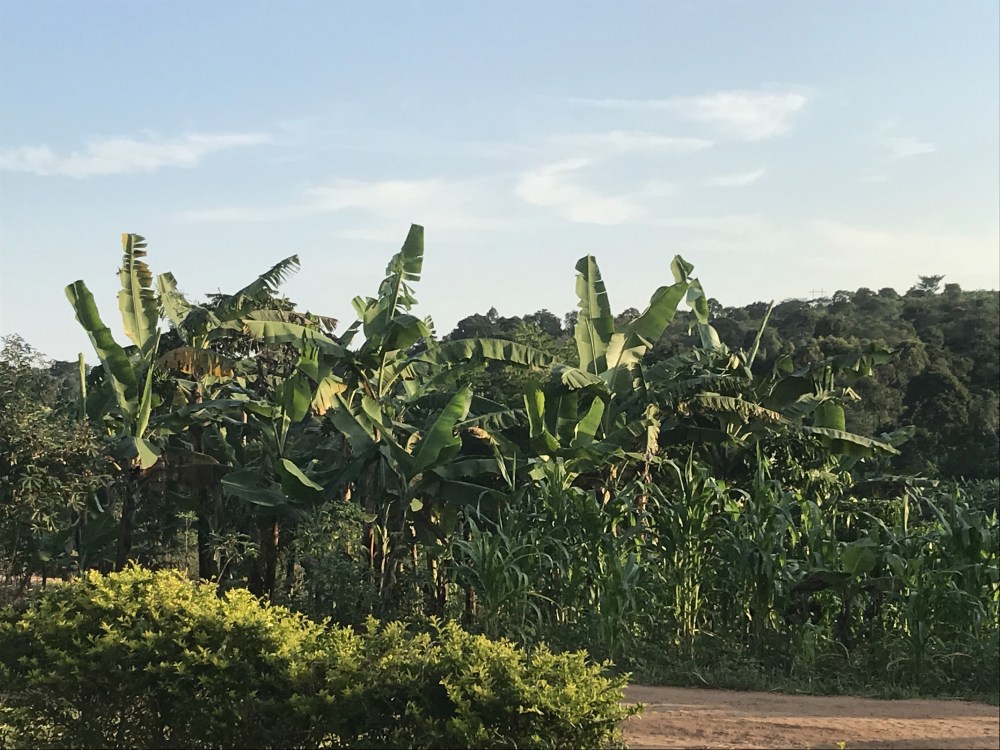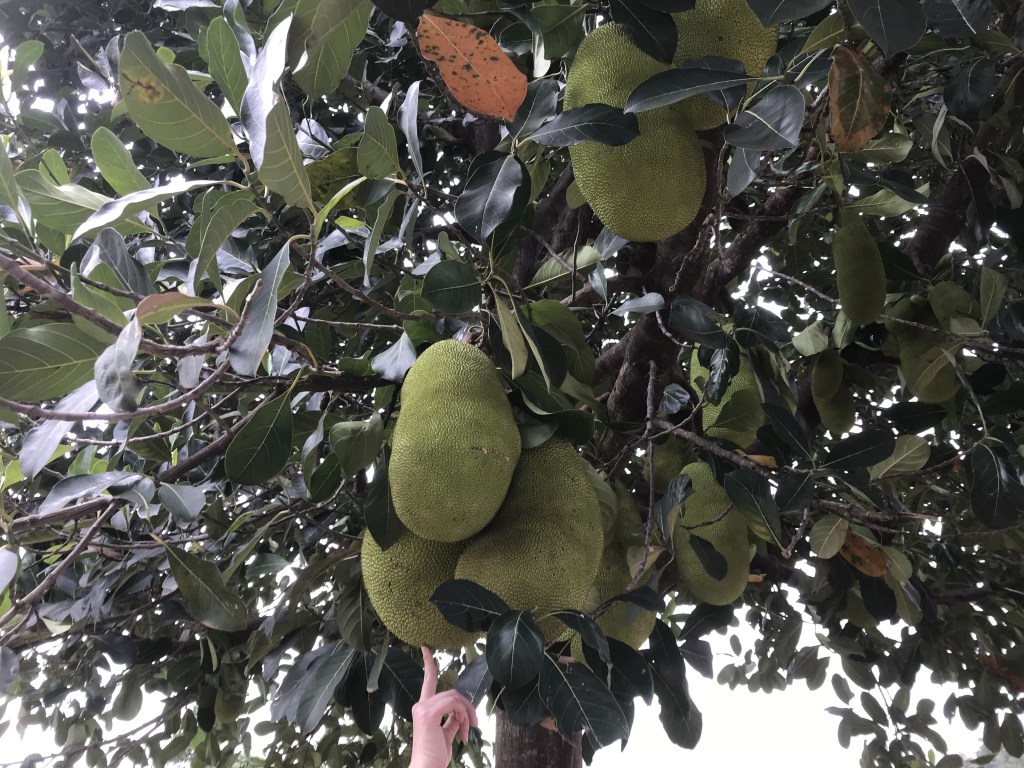
Uganda. Green. A deep, intense green. It could almost be Asturias in the north of Spain, if it weren’t for the banana plants.
They tell us it’s the rainy season, but it isn’t like the rainy season in Mexico that I experienced during my time there as a student years ago: every afternoon there would be torrential rain for a couple of hours and then the sun would come out. Here, it seems to rain occasionally but when it does, it’s with a vengeance. In fact, the day we arrived, it rained in the afternoon and washed away part of the main road from Kampala to the airport in Entebbe and destroyed some property and houses there.
Green, but also red. Most of the roads are dirt tracks, not paved, even in the capital. The soil is a deep red colour that gets everywhere: shoes, socks, children, all stained red. Red dust forms clouds as the cars and the “boda boda” (motorbikes) rattle and shake along the roads, trying their best to avoid the numerous potholes. Imagine what those roads are like after it rains!
On a hot, dry day we visited a slum area. The dirt tracks went up and down, higgledy-piggledy, criss-crossed with dirty streams of red-tinted water and waste. And children. Hundreds of children, dirty, in rags, semi-naked, bare-footed. No type of sanitation exists in this area. The day after our visit there was a torrential rainstorm that lasted for around two hours. I can’t even imagine what the slum must have been like after that. A mud bath for sure! I don’t know how they survive in those conditions. It’s another world.
In another neighbourhood, also very poor but not so extreme as the slum area, we saw an adobe house, red, of course, where a family of four were living. The bottom of the house had fallen away, eroded by the rain. They told us the house could fall down at any time. We prayed for the family and the house. When we were back in Spain, we learnt that the house did, in fact, fall down, but fortunately the family were saved, unharmed. The house is now being re-built.


But the intense rain is also responsible for the brilliant shades of green we see everywhere, the incredible fertility of this soil and the abundance of trees, fruit and vegetables. Enormous avocados, deliciously sweet pineapples which give off an amazing smell, Jack fruit and, of course, every kind of bananas and plantains you can imagine: yellow, green, for eating, for cooking, for making matoke (cooked, green bananas, mashed into a paste). I think about how we buy them in Spain, maybe four or five bananas to last the week; here they cut off the whole banana stem, which can weigh up to 50 kg.
Splashes of red are also present in the beautiful flowers of Uganda such as hibiscus, fuchsia, bottlebrush (Callistemon) and coral tree flowers (Abyssinian Erythrina) . An explosion of colour amongst so much green.
Green and red. First impressions. Interestingly, we brought a children’s game with us called “Traffic Light”. You raise a green disk and the children move forward. You raise a red disk and the children stop and remain still. At first, we couldn’t understand why this game wasn’t working with the children, until we realised that we had hardly seen any traffic lights or traffic signs since we had been in Uganda. Here, red does not necessarily mean “stop” and green doesn’t mean “go”, it’s as simple as that. We just needed a slight cultural adjustment when explaining the game, that’s all. For us to adapt to Uganda took a little longer!










One Comment Add yours